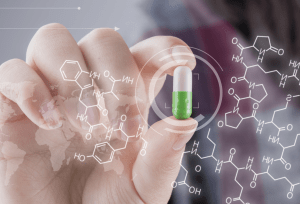FDA Layoff Crisis: Potential Impact on Drug Approvals
The recent large-scale layoffs at the U.S. Food and Drug Administration (FDA) may have wide-ranging implications for pharmaceutical companies’ drug registration and approval processes. The FDA has about 18,000 employees. Their decision to lay off thousands is worrying. This mainly affects departments that oversee food, medical devices, and tobacco products.
It is still unclear if drug evaluation teams will be impacted. Nonetheless, the overall reduction in the workforce could lead to the following:
- Slower Review Speed: The layoffs may hurt the FDA’s ability to review new drugs and medical devices. This could make review times longer and delay the launch of new drugs.
- Reduced Regulatory Efficiency: Staff shortages could lead to delays in regulatory processes, affecting the approval efficiency of drugs and medical devices.
- Barriers to New Drug Launches: The layoffs might affect the FDA’s ability to review new drug applications. This could delay the launch of new therapies in the market.
A reduced workforce might hinder the FDA’s ability to review new drug applications (NDAs), delaying the market launch of groundbreaking therapies.
FDA Fast-Track Programs: A Beacon of Hope for Innovative Drugs
Recognizing the challenges inherent in drug development, the FDA has established several special designations and expedited pathways to accelerate the development and approval of treatments, especially for serious conditions with unmet medical needs. These programs include:
1. Fast Track Designation (FTD)
- Objective: Speed up the development and review of drugs targeting serious conditions with unmet medical needs.
- Key Requirements: Demonstrated preliminary efficacy in preventing, diagnosing, or treating a specific disease.
Focus on improving patient survival, daily functioning, or disease progression.
2. Accelerated Approval Pathway
- Core Criteria: Designed for drugs addressing unmet medical needs.
Must show efficacy based on surrogate or intermediate clinical endpoints predictive of clinical benefit.
- Advantage: Reduces time to market, particularly effective in oncology.
3. Priority Review
- Eligibility Standards: Significant improvements in safety or efficacy compared to existing treatments.
Strong scientific evidence supporting clinical benefit.
These programs give hope to patients waiting for important treatments and allow biotech and pharmaceutical companies to bring new drugs to market faster.
The Potential of AI Translation in the Life Sciences Sector
AI translation has become an important tool in the life sciences industry. This is due to global market growth and stricter rules. Its primary applications include:
1. Document Translation & Localization
- Medical Literature & Research Reports: Neural Machine Translation (NMT) ensures accuracy and compliance in translating clinical studies, drug leaflets, and more.
- Regulatory Document Localization: AI helps localize registration documents, informed consent forms, and other compliance papers. This ensures they meet FDA, EMA, and other global standards.
2. Language Support for Clinical Trials
- eCOA/ePRO Data Localization: AI improves the translation of electronic Patient-Reported Outcomes (ePRO) and electronic Clinical Outcome Assessments (eCOA). This makes the patient experience better and keeps data consistent.
- Multilingual Patient Recruitment Materials: AI generates culturally adapted recruitment ads, questionnaires, and consent forms for diverse regions.
3. Regulatory Filing & Compliance Document Processing
- Automated Terminology Management: AI-driven glossaries and style guides ensure consistent and compliant translations.
- Smart Document Review: AI-assisted compliance tools automatically verify that regulatory documents meet local legal requirements.
4. Medical Marketing & Communications
- Multilingual Content Creation (AI Copywriting): AI generates global-ready promotional materials, product descriptions, and educational content for pharmaceutical companies.
- SEO-Optimized Content Localization: AI creates digital marketing content tailored to local regulations, search preferences, and cultural norms.
5. Real-Time Language Technologies
- AI-Powered Interpretation & Subtitling: This tool provides real-time translation and subtitling. It is useful for global medical conferences and team meetings.
- Multilingual Chatbots: 24/7 AI chatbots assist patients and healthcare providers with medical inquiries, drug information, and more.
6. Data Security & Compliance
- Sensitive Data Protection: AI tools use encryption and data masking to follow privacy laws like HIPAA and GDPR.
- Traceable Translation Workflows: Maintains translation histories and version controls to meet regulatory audit requirements.
7. Language Data-Driven Insights
- Sentiment Analysis & Patient Feedback Mining: Natural Language Processing (NLP) looks at patient reviews and drug feedback. It helps find important market insights from this unstructured data.
- Multilingual Literature & Patent Monitoring: AI continuously scans global medical journals, patents, and research databases to identify market opportunities and emerging scientific trends.
AI Translation: A Strategic Solution to the FDA Layoff Crisis
While the challenges stemming from the FDA layoffs are significant, AI translation offers innovative solutions to help the life sciences sector adapt. By enhancing global communication, accelerating time-to-market, and ensuring regulatory compliance, AI translation has become a vital force in driving pharmaceutical innovation.
Life sciences companies face complex rules and seek global market chances. AI-powered language strategies can help simplify operations. They can also improve compliance and deliver life-saving therapies to patients more quickly.
Take Action Now: If you work in life sciences, explore AI translation today. It can open new market opportunities for your business!





